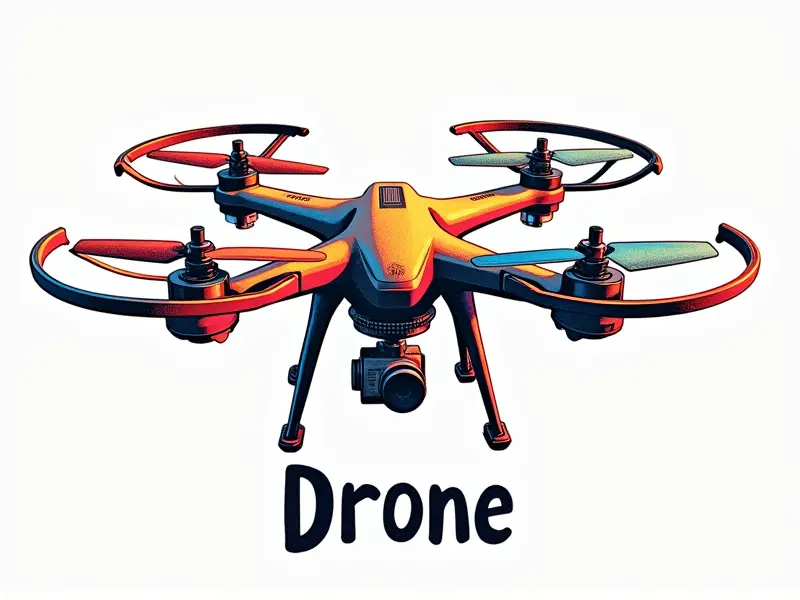Best FPV RC controller setup?

The Best FPV RC Controller Setup: A Comprehensive Guide
FPV (First Person View) drone racing has become increasingly popular among hobbyists and professionals alike. To get the most out of your FPV experience, it's crucial to have a well-configured controller that enhances performance and control. This article will guide you through selecting the right components, setting up your gear, and optimizing your setup for peak performance.
Top 5 Must-Have Features in FPV Controllers
When choosing an FPV RC controller, there are several key features to consider:
- Customizable Throttle Curve: Adjust the throttle response curve for smoother and more precise control.
- Vibration Dampening: Reduce hand fatigue during long flights by minimizing vibrations from the controller.
- Built-in OSD (On-Screen Display): Monitor essential flight data such as battery voltage, altitude, and speed directly on your goggles.
- Modular Design: Easily swap out components like joysticks or switches to tailor the controller to your specific needs.
- Battery Management System (BMS): Ensure reliable power delivery with a robust BMS that monitors and protects your batteries.
Ultimate Guide to Setting Up Your FPV Controller
Proper setup is crucial for achieving optimal performance. Follow these steps:
- Install the Transmitter: Connect your transmitter to a power source and ensure it's properly calibrated.
- Configure Channels: Assign specific channels on your controller to control different aspects of your drone, such as throttle, pitch, roll, and yaw.
- Tune Throttle Response: Adjust the throttle curve for smooth takeoffs and landings without sudden jerks or stalls.
- Set Up Vibration Dampening: Install dampeners to reduce hand fatigue during extended flights.
- Calibrate Sensors: Calibrate sensors like accelerometers and gyroscopes for accurate flight data.
Choosing the Right Transmitter for FPV Racing
The transmitter is a critical component of your FPV setup. Consider these factors when selecting one:
- Range and Frequency Band: Choose a transmitter with sufficient range and a frequency band that minimizes interference.
- Built-in Telemetry: Opt for transmitters with built-in telemetry features to monitor flight data in real-time.
- Modularity: Select a modular transmitter that allows you to swap out components easily.
- Power Efficiency: Ensure the transmitter has efficient power management and long battery life.
Maximize Performance with Perfect FPV Controller Setup
To get the most out of your FPV controller, follow these tips:
- Optimize Joystick Sensitivity: Adjust joystick sensitivity for precise control during high-speed maneuvers.
- Customize Switch Layout: Arrange switches in a way that makes them easily accessible and intuitive to use.
- Use High-Quality Cables: Ensure all cables are of high quality to prevent signal loss or interference.
- Regular Maintenance: Keep your controller clean and well-maintained for optimal performance.
Essential Tips for Configuring Your FPV RC Gear
Configuring your FPV gear correctly is essential for a smooth flying experience. Here are some tips:
- Test in Safe Environments: Test your setup in safe, open areas before venturing into more challenging terrains.
- Use Quality Components: Invest in high-quality components to ensure reliability and performance.
- Practice Regularly: Practice flying regularly to improve your skills and become comfortable with your setup.
- Stay Updated: Keep up-to-date with the latest advancements in FPV technology for better performance and safety.
How to Build an Affordable Yet Effective FPV Setup
You don't need a high-end budget to build an effective FPV setup. Here's how to do it:
- Select Budget-Friendly Components: Choose components that offer good performance at affordable prices.
- DIY Solutions: Consider building some parts yourself, such as custom mounting brackets or vibration dampeners.
- Leverage Community Resources: Join FPV communities for advice and tips on building an effective setup without breaking the bank.
The Impact of Controller Choice on FPV Performance
Your controller plays a significant role in your overall FPV performance. A well-chosen controller can enhance control, reduce fatigue, and improve safety:
- Improved Control: A high-quality controller with precise controls allows for smoother flight maneuvers.
- Reduced Fatigue: Features like vibration dampening help minimize hand fatigue during long flights.
- Better Safety: Reliable components and proper setup reduce the risk of malfunctions or accidents.
Simplifying FPV Control: A Beginner's Guide
If you're new to FPV racing, here are some tips to simplify your control experience:
- Start with Basic Controllers: Begin with simpler controllers that have fewer features but are easier to use.
- Focus on Essential Features: Prioritize essential features like throttle curve adjustment and vibration dampening.
- Practice Regularly: Consistent practice will help you become more comfortable and proficient with your controller.
Advanced Techniques for Optimizing Your FPV Transmitter
To take your FPV setup to the next level, consider these advanced techniques:
- Custom Firmware: Install custom firmware to unlock additional features and performance enhancements.
- Advanced Telemetry: Utilize advanced telemetry systems for real-time data monitoring during flights.
- Modular Upgrades: Upgrade components like joysticks or switches to tailor your controller for specific needs.
Quick Guide to Setting Up FPV RC Controllers
Here's a quick guide to setting up your FPV RC controller:
- Install Firmware: Install the latest firmware on your transmitter and receiver.
- Connect Components: Connect all necessary components, such as joysticks and switches.
- Calibrate Controls: Calibrate controls for optimal sensitivity and responsiveness.
- Test Setup: Test your setup in a safe environment to ensure everything is working correctly.
Conclusion
A well-chosen and properly set up FPV controller can significantly enhance your flying experience. By considering factors like range, modularity, and power efficiency when selecting components, you can build an effective setup that maximizes performance while minimizing fatigue and risk. Whether you're a beginner or an experienced pilot, following these tips will help you get the most out of your FPV racing adventures.

